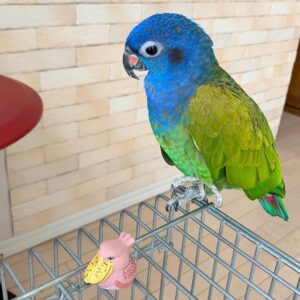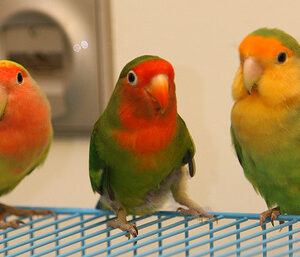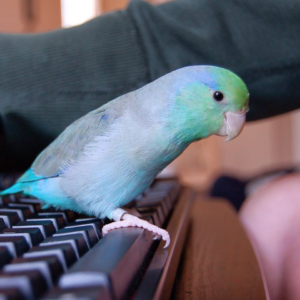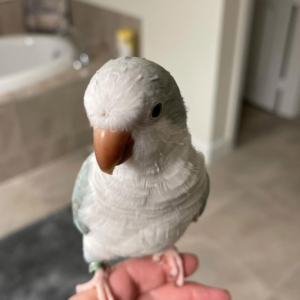Blue Headed Pionus
$1,000.00 Original price was: $1,000.00.$850.00Current price is: $850.00.
- Size: 12 inches
- Blue Headed Pionus Lifespan: 25 – 30 years and even more
- Species: Pionus Parrot
- Colors: Green & blue details
- Sounds: Quiet, Talking, Mimics, Natural calls
- Interaction: Social, Affectionate, Fun, Calm and Docile
Blue Headed Pionus for sale
Explore the world of unique pet parrots by meeting one of the lesser-known species, the blue head pionus parrot. Within the diverse and distinctive South American group of Pionus parrots, this species stands out for its exceptional qualities. Renowned for its warmth, charm, and striking appearance, the pionus blue headed is celebrated as a fantastic choice for a pet parrot.
Although initially resembling Amazon parrots, Blue Headed Pionus are distinct avian species. Despite their relative obscurity, these fascinating birds are steadily gaining popularity as pets. While not commonly kept as pets, their remarkable qualities have contributed to their increasing popularity among bird enthusiasts. Check out our parrot store for blue headed pionus price.
Blue Headed Pionus price
The Blue-Headed Parrot, a prominent avian species in South America, predominantly inhabits the Amazonian region, with its range extending across the southeastern territories, including the Araguaia-Tocantins River system as its eastern boundary. Notably, a disjunct population thrives southeastward along Brazil’s South Atlantic coast, spanning approximately 1500 kilometers from Pernambuco in the north to Espírito Santo state in the south. Beyond South America, the Blue-Headed Parrot’s distribution extends northwestward into Central America, reaching from Panama through to Costa Rica. Interestingly, this species avoids certain geographic features, such as the northern Andes cordillera spine, as well as smaller contiguous areas in central Venezuela and northern Colombia.
Further diversifying its range, the Blue-Headed Parrot occupies a Pacific Ocean coastal strip, stretching from southern Ecuador northward to the Caribbean regions of northwestern Colombia and western Venezuela. This distribution pattern underscores the adaptability and resilience of these captivating birds across a variety of habitats and geographical landscapes.
Feeding
The Blue-Headed Parrot typically selects tree cavities as nesting sites, where the female lays a clutch of three to five white eggs. Incubation, predominantly managed by the female, lasts for approximately 26 days. Following hatching, the chicks remain in the nest for about 70 days before venturing out on their own.
Be the first to review “Blue Headed Pionus” Cancel reply
Related products
Other Parrots
Other Parrots
Other Parrots
Other Parrots
Other Parrots
















Reviews
There are no reviews yet.